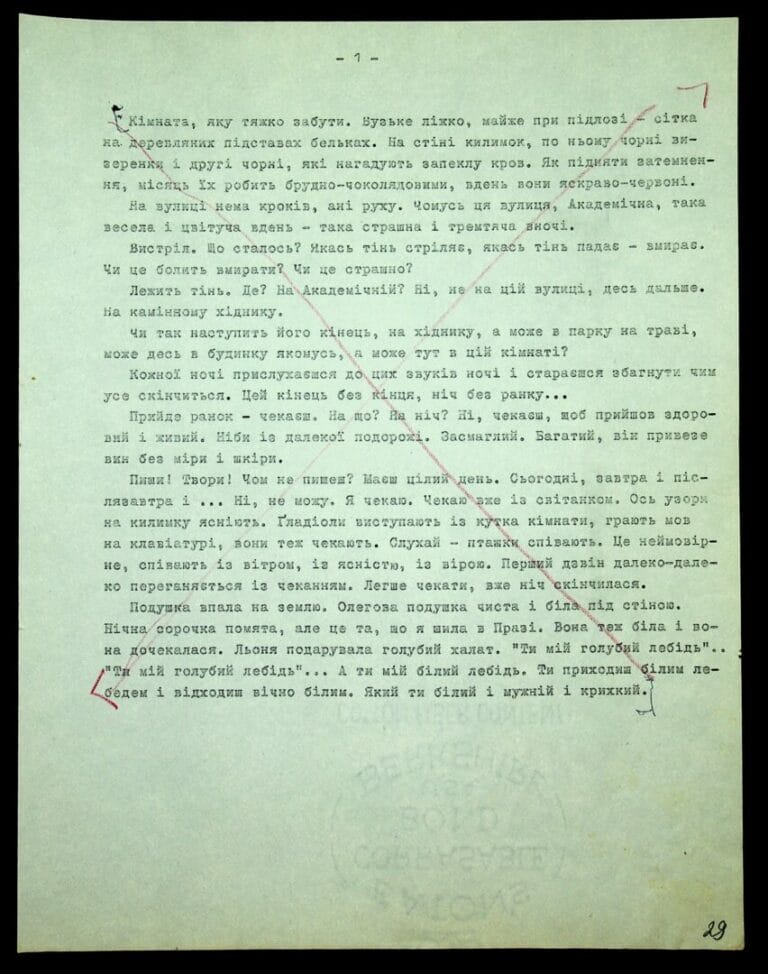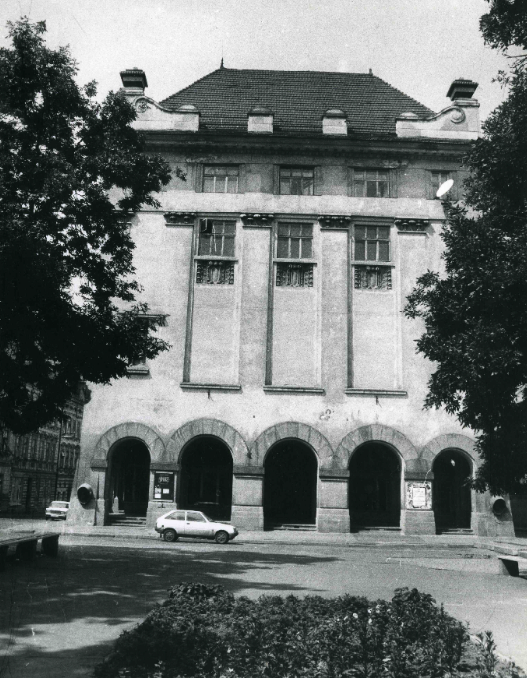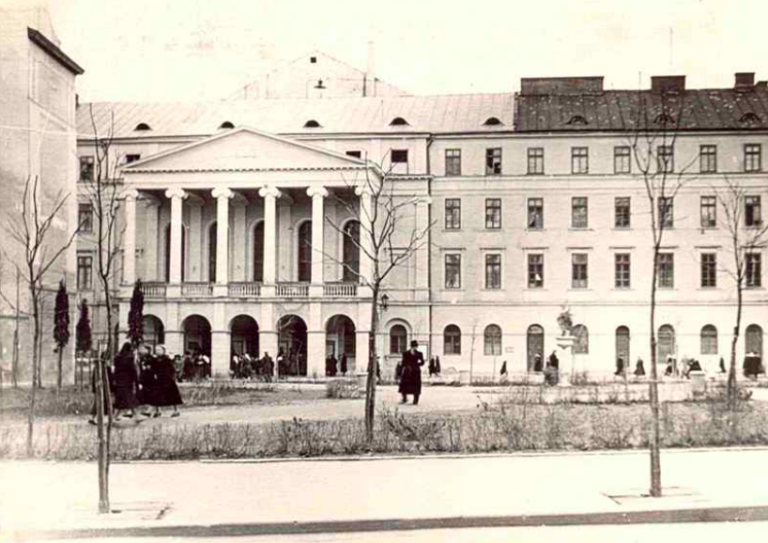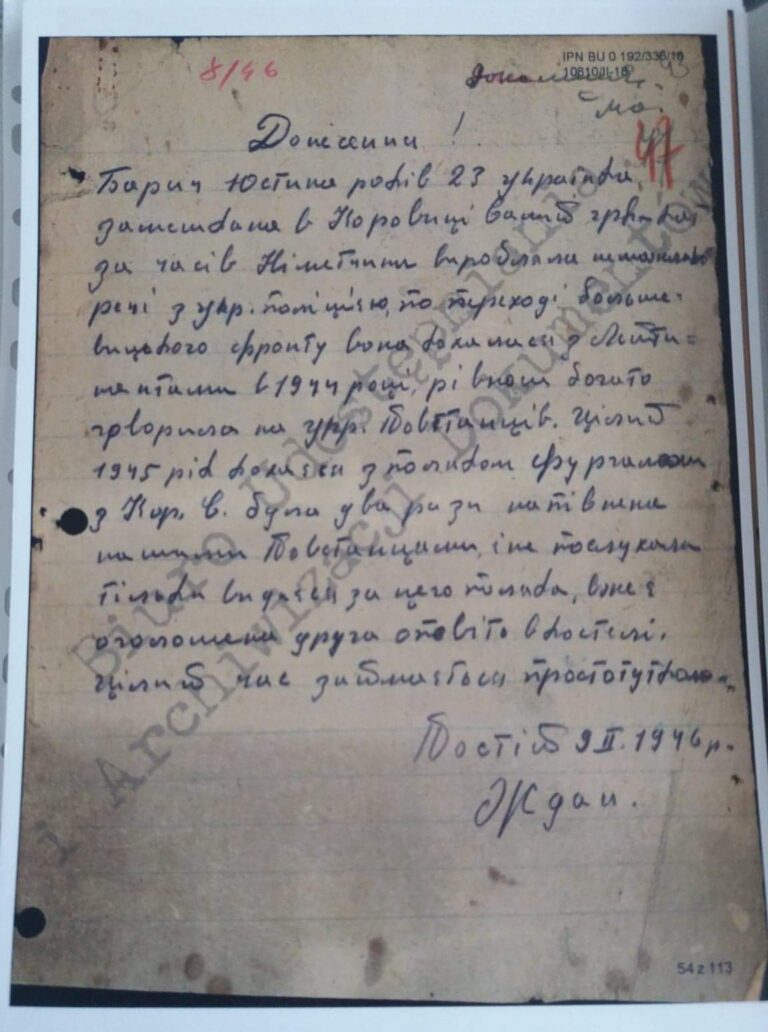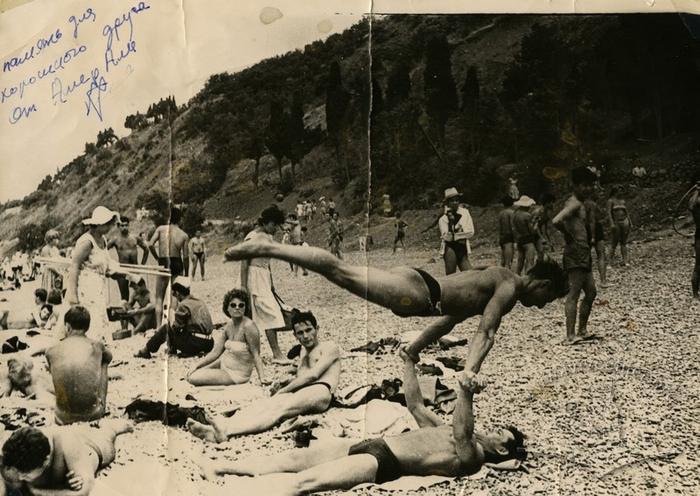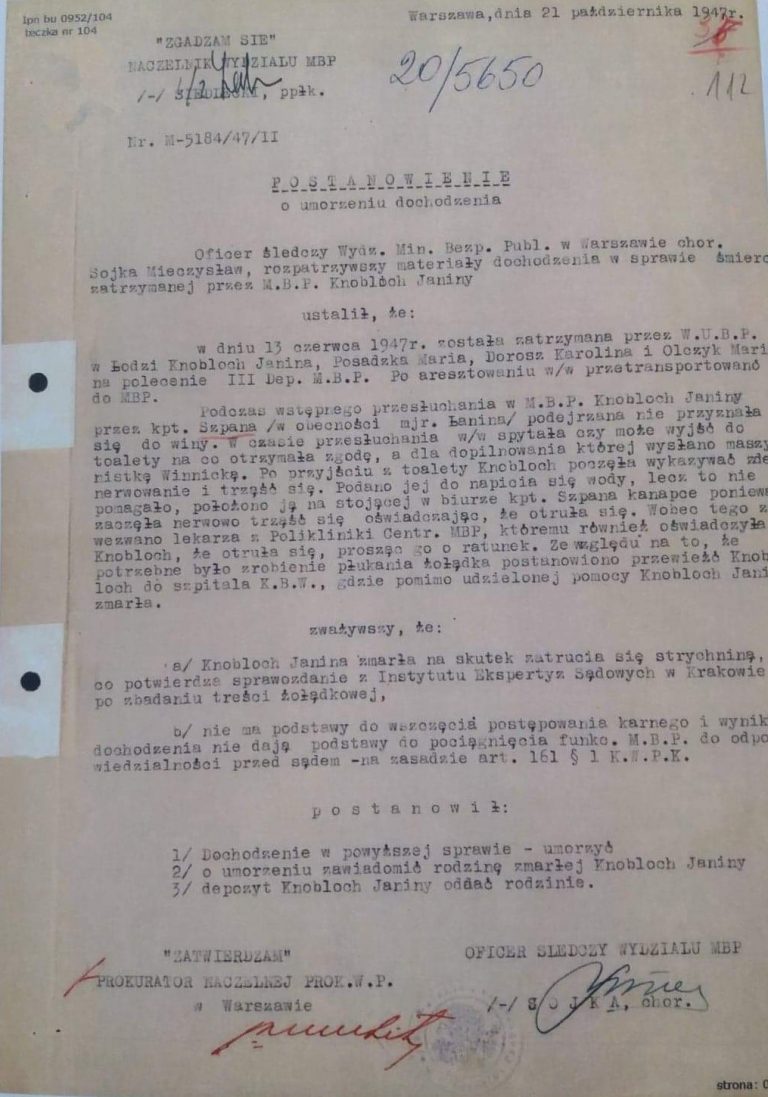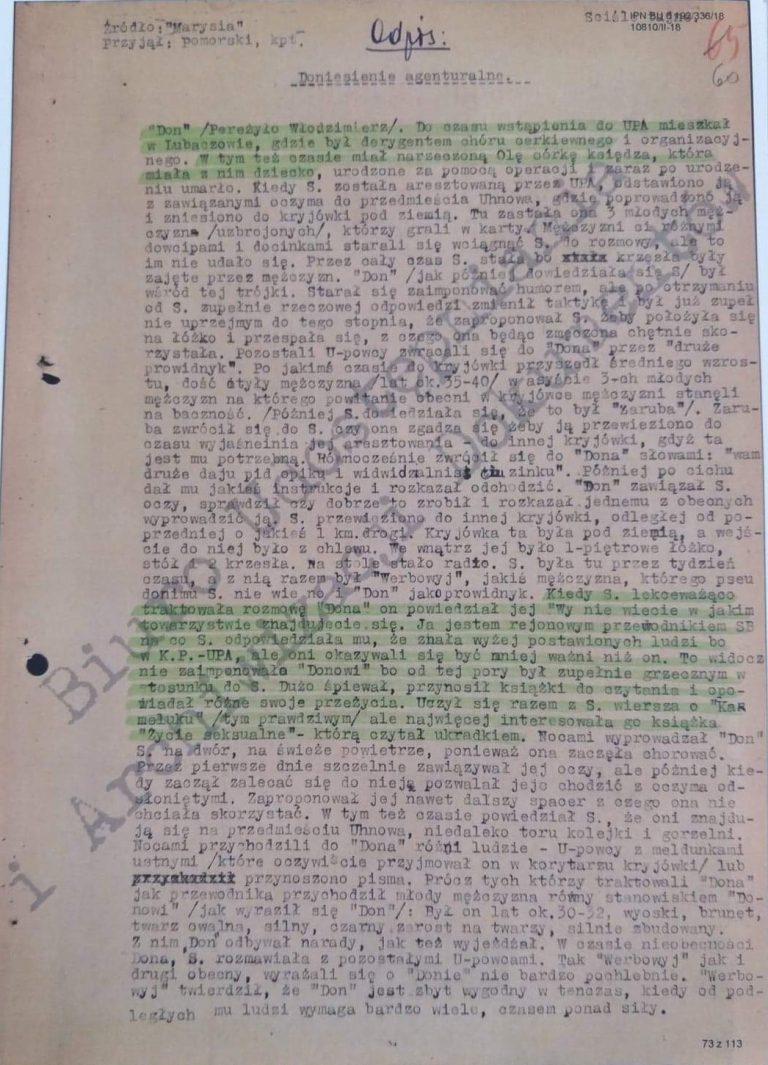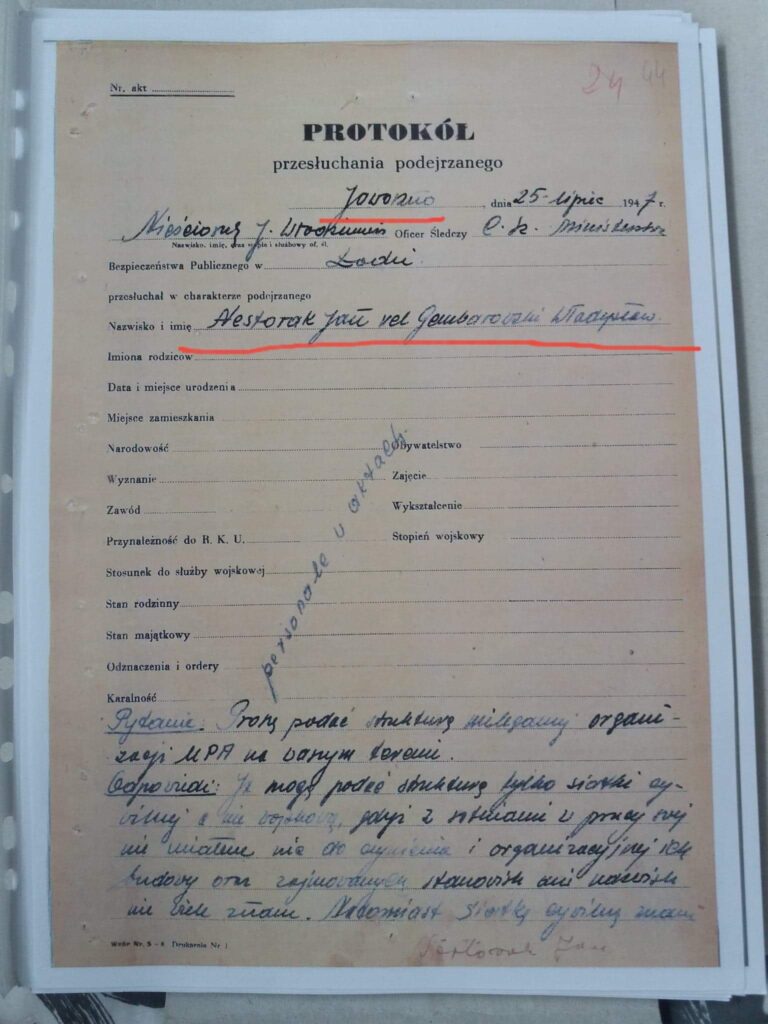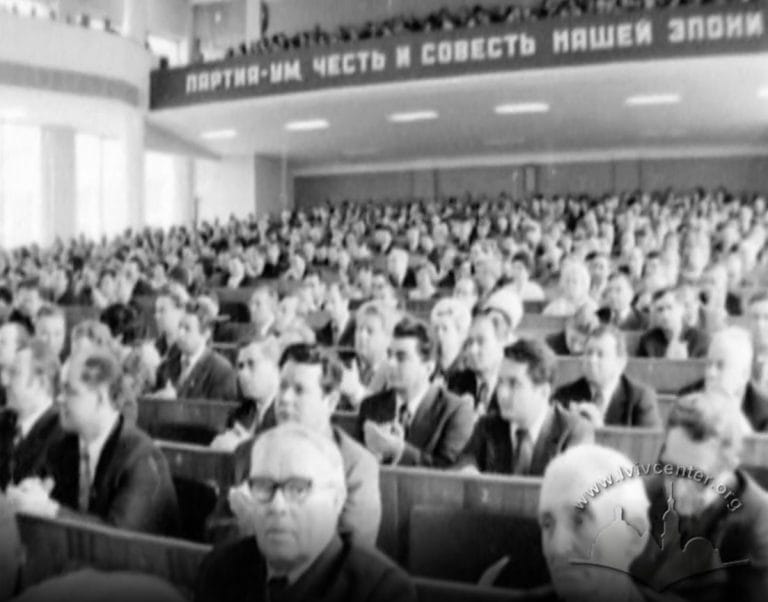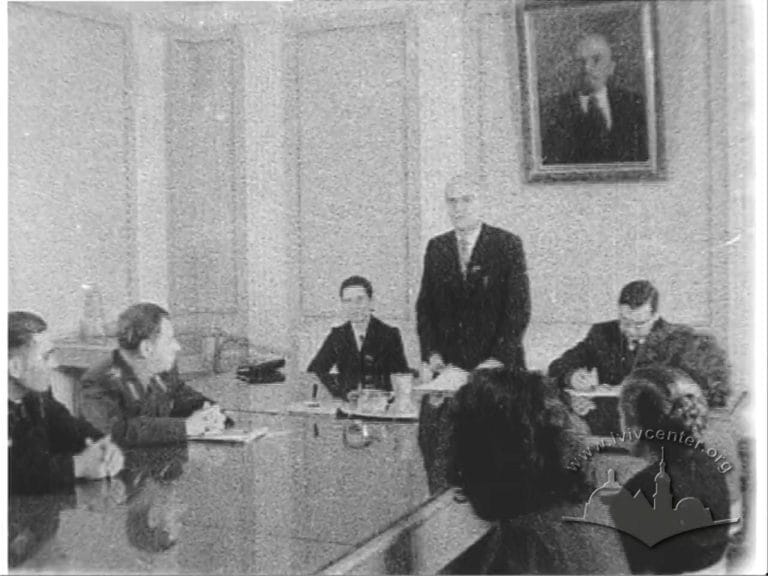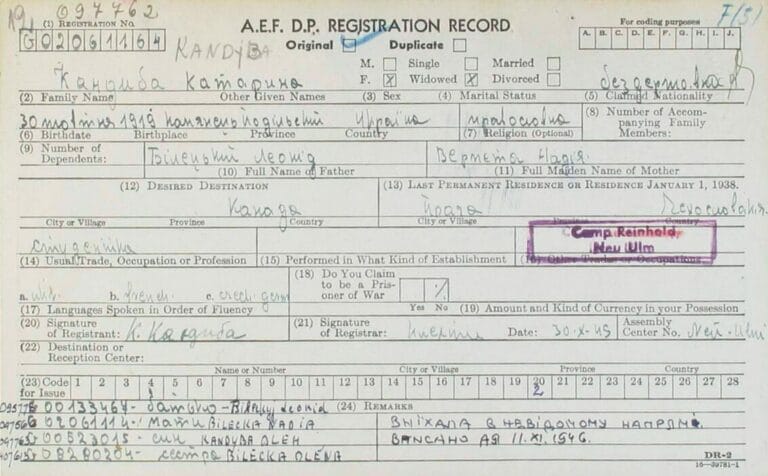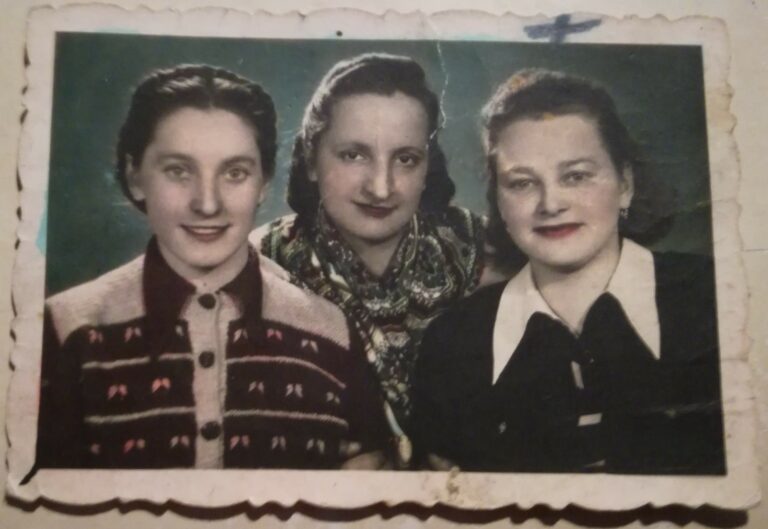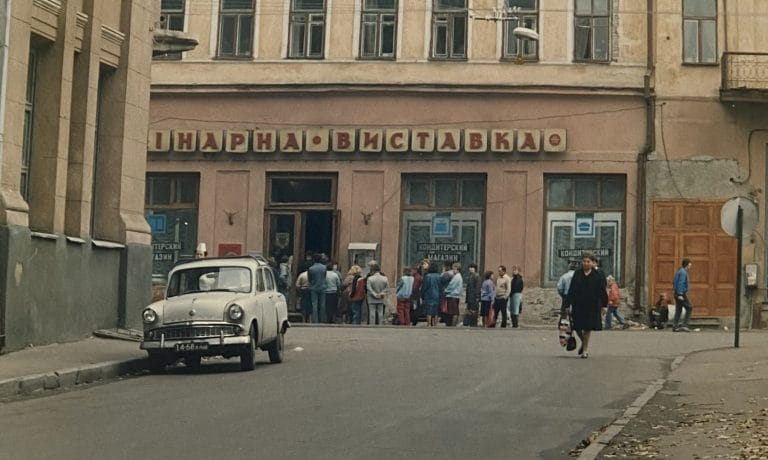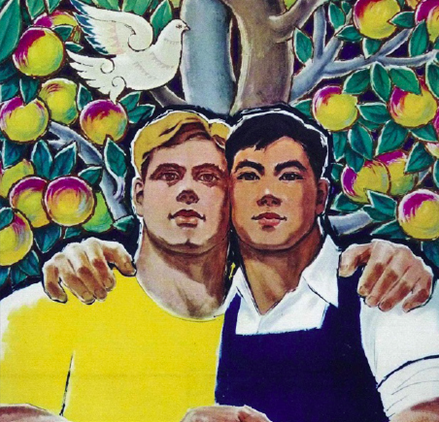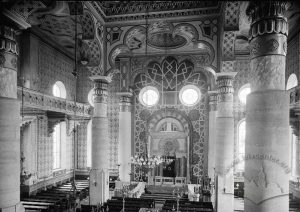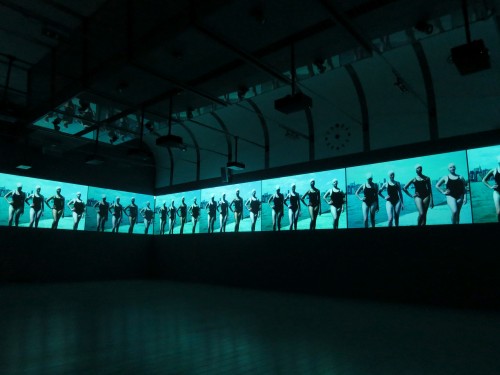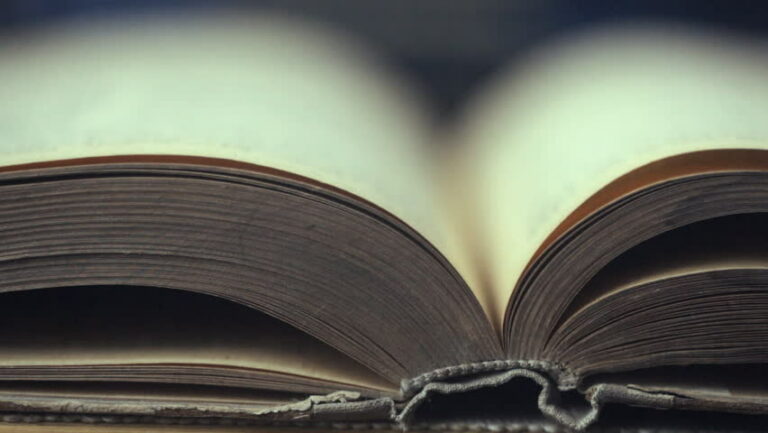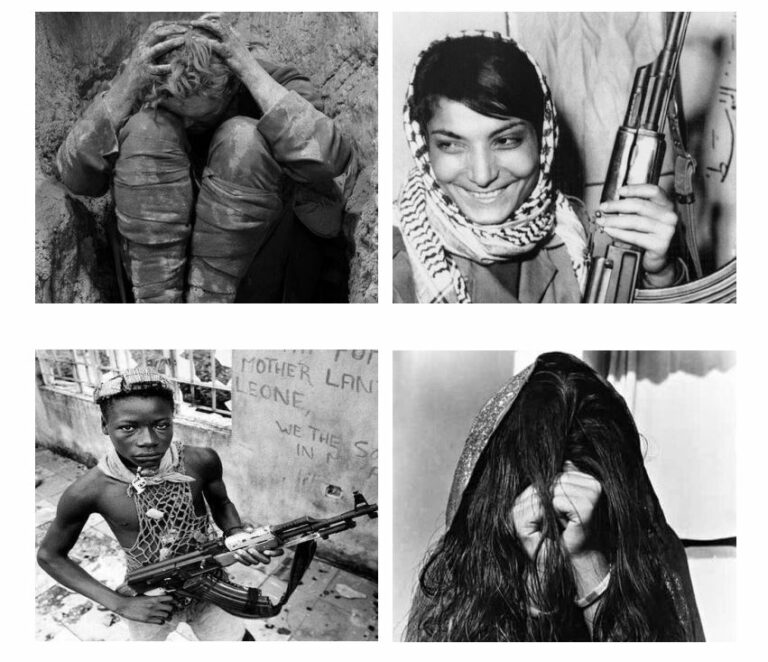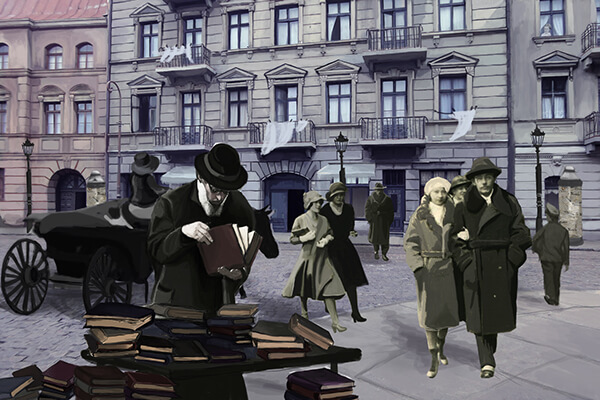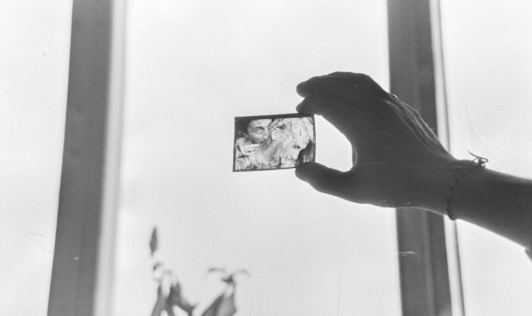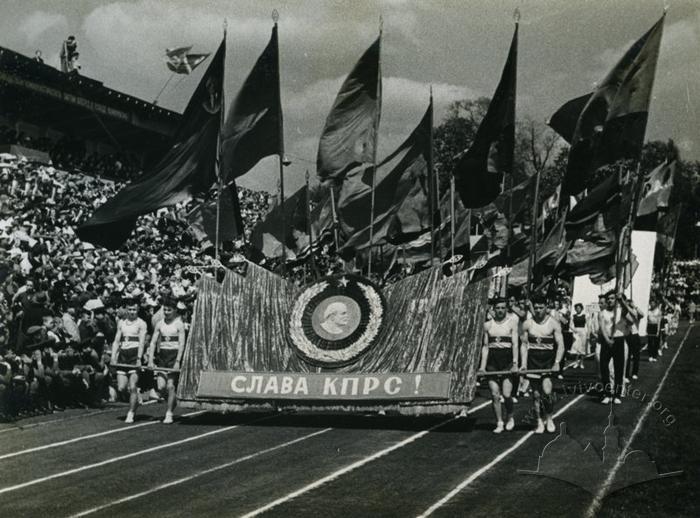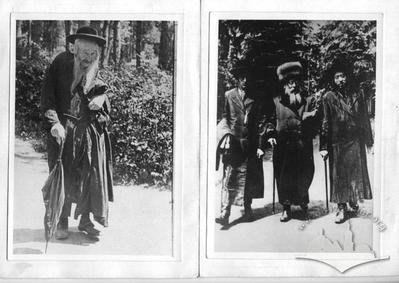1940s
Primary Sources

Yevhen Ivanychuk’s “Cold Northern Sky”: The Example of Gulag Prose
While research on Gulag memoirs and prose in the West mainly and conventionally focuses on Russian experiences (for instance, 2024 “Gulag Fiction. Labour Camp Literature from Stalin to Putin” by Polly Jones), it generally omits the representation of other experiences connected to the case of nations that were enslaved by Russians. Some of these experiences were represented by Ukrainians, and they could elucidate certain blind spots that the Russian mentality avoids to confess. In this regard, the memoirs by Yevhen Ivanychuk (1927-2003) Kholodne Nebo Pivnochi [“Cold Northern Sky”], which will be analyzed below, clearly stand out. First published in the journal Dzvin [“Bell”] in 1989, the full text of Ivanychuk’s memoirs first appeared...

Resolution on the replacement of rations with financial compensation, 1948
On December 23, 1947, the Council of Ministers of the USSR and the Central Committee of the CPSU(b) issued a directive to the heads of republican governments, Central Committees of Communist Parties, and regional executive and party bodies. This directive proposed changes to the existing system of providing benefits to officials. Instead of rationing, monetary compensation equivalent to 2-3 times their salary was to be given, and special food and industrial stores were to be opened to the general public. The directive was unusual, as it combined mandatory language—“it is necessary to cancel…”—with a softer, more suggestive tone: “We suggest you...” This phrasing symbolically implied a degree of freedom in decision-making. On January...

Testimonies of Ihor Kostetskyi’s Fate under Nazi Rule
Ihor Kostetskyi was just one example of several several million individuals who were taken by the Nazi Army from occupied eastern European territories and had to work as Ostarbeiter in the German war industry. Before the war, Kostetskyi was involved in several cultural, artistic, and creative projects and initiatives. Born in Kyiv, he made little declaration of his Ukrainianness until Carpathian Ukraine started to seek independence in 1938. When he was mobilized into the Red Army at the start of the German invasion in 1941, he was in the process of changing his real name, Ivan Merzliakov, to the pen name, Ihor Kostetskyi. This is the name he would use in the future....
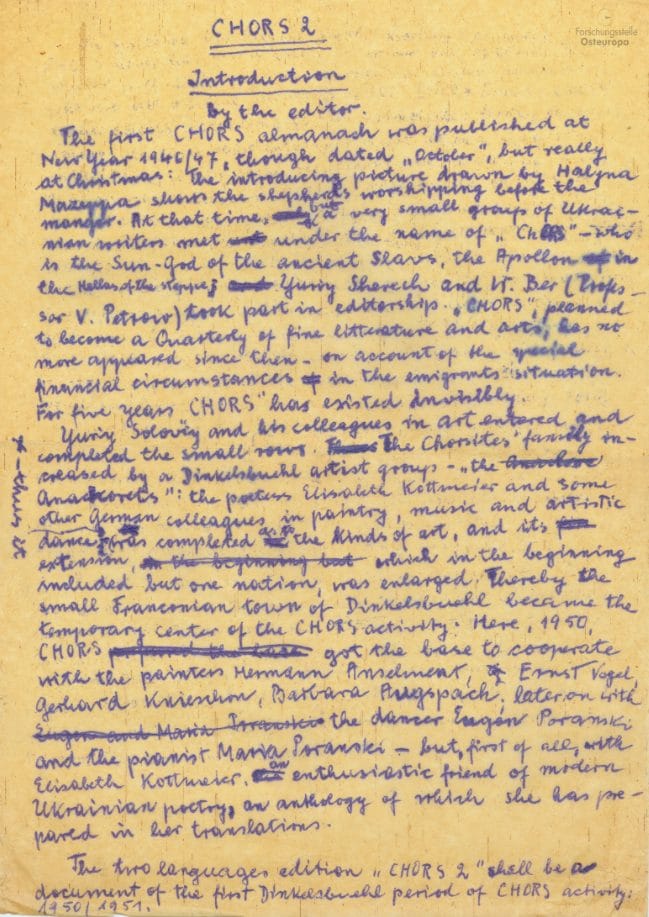
Testimonies on the Material Situation of the Culturally Active Ukrainian Emigration in Germany, 1946-1951
The Ukrainian DP journal KHORS was initially planned to be quarterly. However, the first KHORS edition in 1946 was also the last. The following documents provide insight into the reasons for the failure to publish subsequent issues and interesting evidence about the financial situation of the Ukrainian diaspora in the American occupation zone in general. The second and third issues of KHORS were planned to be published shortly after the first. A handwritten list of the planned content for these two issues confirms this thesis. It was written in an old document form of the German Air Force from the Second World War. These forms were distributed to the residents of the DP...

Principles and Future Aims of the DP Journal KHORS, 1946-1951
The Ukrainian DP journal KHORS focused on culture, arts, and cinema. It was published by a small team around the writer Ihor Kostetskyi. In its statutes, KHORS was not only displayed as a journal. Instead, it would be somewhat of a worldwide movement that people could join or leave, as they wish, in the future. The overriding principle was to accept the “primacy of the artistic form,” art for art’s sake. Every artist who shared these postulates was allowed to belong to KHORS “regardless of race, nationality, confessional or political convictions.” Only one group was excluded, the communists because “their ideology does not acknowledge the primacy of form.” Kostetskyi dreamed that in the...
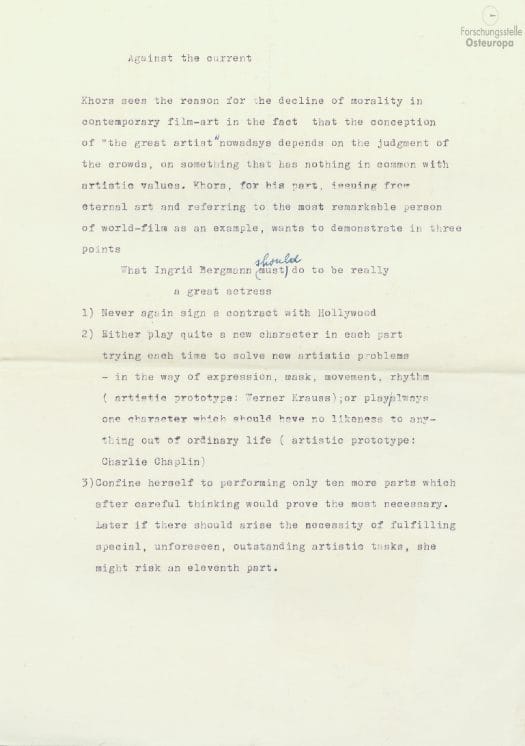
Reviews of Film Art as an Instrument of Independence by the Ukrainian DP Journal KHORS, 1946-1951
The Ukrainian DP journal KHORS was planned as a quarterly about art and culture. It was published by a group of editors headed by writer Ihor Kostetskyi. Although the second issue was never published, the editorial notes and pre-written articles ready for publication in the planned second issue speak a lot about the potential inherent in the project. In its statute, KHORS resolutely distanced itself from communism and the Soviet Union. The reason for this position, among other things, was the Soviet ideologization of art. For Ukrainian DPs in the Western occupation zones of postwar Germany, such criticism was not only commonplace but almost expected. However, KHORS went one step further. One of...
Show more
Collapse all
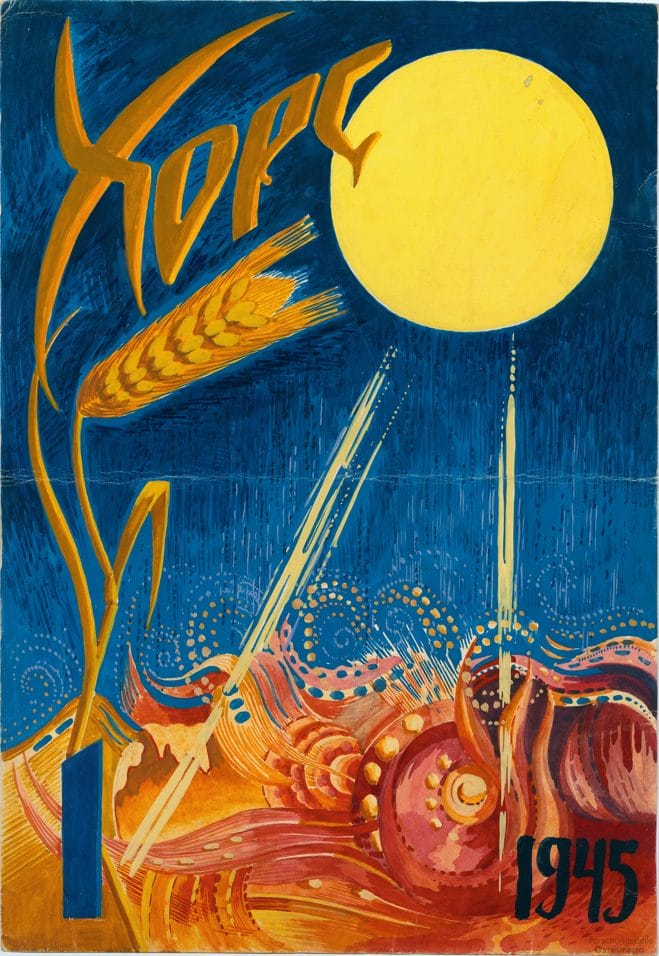
Title Pages of Never Published Editions of the DP Journal KHORS, 1945-1951
The idea of the Ukrainian DP-creation KHORS as a movement and a journal was kept alive for many years, even though the journal’s publication, initially planned as a quarterly, could never be realized beyond a first edition in 1946. The title pages listed here were never published, but they can provide interesting insights into the senses put into KHORS by its creators, its design, and the materials used. In 1945, immediately after the war, Ukrainian artist Halyna Mazepa drew the first cover with simple paint on a piece of cardboard. Its design was intended to reveal the idea of the future edition. The journal’s title is written in wheat, an important symbol in...
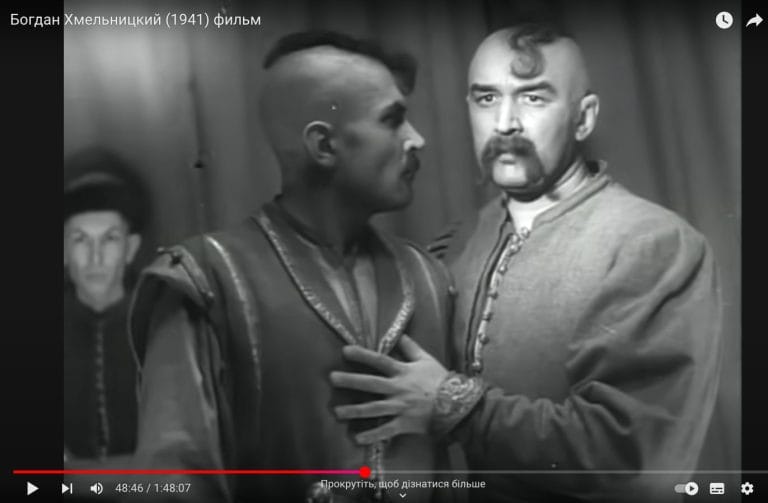
Bohdan Khmelnytskyi, a 1941 Soviet Propaganda Film
“Bohdan Khmelnytskyi” is a 1941 Ukrainian Soviet historical propaganda film directed by Ihor Savchenko. It is about the life of Bohdan Khmelnytskyi, the hetman of the Zaporozhian Cossacks, and the first years of Cossacks liberation war against the Polish nobility led by him. This film was shot at the Kyiv Film Studio (now the Oleksandr Dovzhenko National Film Studio). Its script was based on the 1939 play of the same name by the Ukrainian Soviet playwright and publicist Oleksandr Korniychuk.
In addressing the causes of unlawful actions committed by high-ranking officials in the 1940s and 1960s, the authorities often attributed them to the lingering influence of pre-revolutionary capitalist mentalities among certain managers. This explanation lost credibility over time, as by the 1970s and 1980s, the leadership consisted largely of individuals born and fully socialized within the Soviet Union, supposedly free from the flaws of other, non-communist societies. In this module, Viktor Krupyna uses unpublished archival materials and available source collections to examine the widespread abuse of power by Soviet officials in the Ukrainian SSR in 1945-1991, its causes, scope, and consequences.
The Soviet Union positioned itself as a society of social equality, where the elimination of human exploitation was said to have achieved harmony in class relations. The eradication of social contradictions between the “top” and “bottom” (in Soviet terminology, the “exploiters” and “exploited”) was widely promoted as an indisputable and irreversible achievement of the Soviet state. Yet, this created a paradox: while this ideal was publicly championed, the significant social gap between the people and the so-called “people's power” was a reality that remained unacknowledged. This module by Viktor Krupyna focuses on the financial privileges of the Ukrainian Soviet nomenklatura.
This module by literary scholar Olha Petrenko-Tseunova tells the story of Kateryna Biletska-Kandyba, the wife of Oleh Kandyba (known by the literary pseudonym Oleh Olzhych), a poet and member of the Ukrainian nationalist underground, head of the cultural and educational department of the Leadership of Ukrainian Nationalists (PUN) and the Revolutionary Tribunal of the Organization of Ukrainian Nationalists (OUN) (1939-1941), and her WWII experience and post-war emigration.
Many stories could illustrate the struggles of Ukrainian women as members of the Ukrainian underground during World War II. One is the story of Marija Savchyn, who in 1939, at the age of fourteen, joined the female youth section (iunky) of the Organization of Ukrainian Nationalists (Orhanizatsiya Ukrayins’kykh Natsionalistiv [OUN]), which spearheaded the Ukrainian nationalist movement. While in high school during the Second World War in Przemyśl, Savchyn joined the Ukrainian underground...
Reflections

The Russell-Einstein Manifesto, 1955
The manifesto was issued on July 9, 1955, by Bertrand Russell, during a time when the Cold War and the arms race were escalating. It was signed by 11 eminent scientists, including Albert Einstein. Shortly thereafter, in 1957, the manifesto was publicly presented at the First Pugwash Conference on Science and World Affairs.

Portrait of Kyivan Prince Yaroslav the Wise by Soviet Historiography
In the 1930s, the Kyivan Prince Yaroslav the Wise sarcophagus was repeatedly the subject of scientific research attended by historians, doctors, museologists, anthropologists, and other scientists. For example, on 25 January 1936, a commission headed by the director of the Museum Town, M. Bahrii, examined the contents of the sarcophagus for the first time. At the bottom of the sarcophagus, they found a disorderly accumulation of bones belonging to a man and a woman, as well as small fragments of a child’s skull. The sarcophagus was opened for the second time in 1939. At that time, the commission, which included the famous Soviet scientist V. Ginzburg, decided to transfer the recovered bone remains...
In the last decade, the Ukrainian parliament has issued two laws outlining the legal framework for dealing with the Russian imperial and Soviet past. These laws have sparked numerous scholarly debates on how to address the imperial past, Ukraine's status as part of the Romanov Empire and the Soviet Union, and what to do with the cultural products created over the centuries. This course aims to explore the Soviet legacy in present-day Ukraine and provide students with the necessary theoretical and methodological tools for studying, researching, and writing about Soviet history and culture. The implications for modern Ukrainian identity and politics, particularly in the context of the ongoing war with Russia, will be...
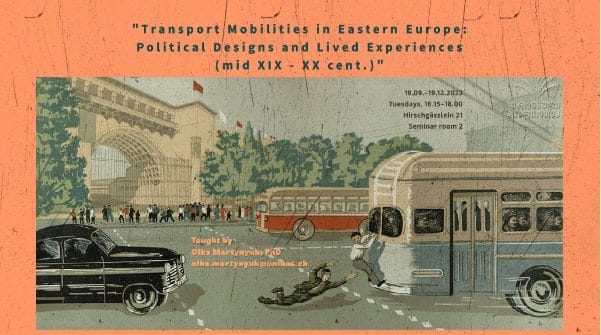 Transport Mobility in Eastern Europe: Political Designs and Lived Experiences (mid XIX – XX Century)
Transport Mobility in Eastern Europe: Political Designs and Lived Experiences (mid XIX – XX Century)
The course invites to explore East-European History of mid XIX - late XX cent. through the concept of mobility, which encompasses movement of people, goods and ideas. Students will deal with a corpus of texts on social history of transportation, as well as with a rich array of visual materials. Of special interest will be cases, specific to the region, for example cultures of Christian and Muslim pilgrimage, Socialist rallies, trolleybus infrastructures or “destalinization” of metro stations. Cases of imported western technologies will provide ground for interregional comparisons, not only in aspects of introduction of transport system, but also in aspects of their exploitation and disintegration. The course is built on a premise...
The course invites to look at the history of Soviet Ukraine from the perspective of its everyday practices. Using many visual sources from 1922 to 1991, students will explore daily routines, housing, clothing, transportation, leisure, and music consumption in urban and rural settings. Periods of peace, war, and crisis will receive equal attention so that one can see how global developments were experienced on a microlevel. Students will explore how maintaining everyday objects and personal habits was essential for building personal safety in different historical contexts. The everyday histories of Soviet Ukraine will also provide a deeper insight into the standard historical narratives about East-European societies, particularly their dialogue with the global society...
This lecture course comparatively and transnationally investigates twentieth-century communism as a modern civilization with a global outreach. It looks at the global spread of communism as an ideology, an everyday experience, and a form of statehood in the Soviet Union, Europe, Asia (i.e.Mao’s China), and post-colonial Africa. With the exception of North America and Australia, communist regimes were established on all continents of the world. The course will examine this historical process from the October Revolution (1917) to the Chernobyl nuclear disaster (1986), which marked the demise of the communist state. The emphasis is not just on state-building processes or Cold War politics but primarily on the social, gender, cultural and economic policies that...
The course explores the history of Russia as an empire from Peter I up to now in the methodological perspective of the new imperial history. What are the historical preconditions and sources of Russian imperialism and militarism? How did the small principality of North-Eastern Europe manage to create the largest empire in the world? To what extent the Russian Empire of the 18th and 19th centuries differed from European colonial empires as well as eastern imperial polities such as Ottoman Empire and China? How did the imperial nationalities policies emerge and evolve? What role did the competition between "great powers" play in turning Russia into an empire? The course attempts to answer these...
The field of social history has achieved the edge of its popularity in 1950-1980s. It was strongly connected with other disciplines, such as economics, demography, sociology, and allowed historians to reach a much wider range of research themes. Since the 1960s, the social history of the Jewish people became important and influential part of the studies. Historians were exploring the possibilities to study Jewish community with new tools and integrating different representatives of Jewish community – workers, women, immigrants, criminals - in a research. Since 1990s historians of Jewish past shifted their interest to cultural studies. However, in the last years, we can see an economic turn, which signifies the search for a...
The aim of the course is to get to know how to analyze examples of visual culture, including: fiction films and documentaries, video, photography. Both contemporary and historical materials will be studied, together with theoretical texts and publications (from the area of film and media studies, anthropology, cultural studies and history. Although images are mostly seen, if you want to really know them and understand them really well, you must not only "see" them but also "read" them, that means to analyze them as a complex message/ text. That is why at our course we will firstly discuss some terms and categories, that would help us to read images such as: composition, convention,...
This course forms a part of Jewish History and Culture of East Central Europe in the 19th-20th Centuries summer school. The syllabus is availible only in Polish.
The course aims to discuss the major military conflicts of the twentieth century from a gender perspective. In doing so, the course covers the history of global and local wars in a wide variety of regions, including Europe, Africa, and Asia. However, rather than surveying a vast number of military conflicts, we will use a case study approach to conduct in-depth analyses of external and internal dynamics of military encounters and the role of gendered violence during them.
In our mini-course we will explore cultural interaction between Jews and non-Jews (Ukrainians, Poles, Russians) in the borderlands of the Habsburg and Romanov empires. This is interaction that may have been conscious or unconscious, and may have involved encounter, appropriation, negotiation, exchange and destruction.
This seminar explores ideas and practices of heritage in Eastern and Central Europe between 1945 and now. The course is designed as a set of five meetings, which will include short lecture introductions, seminar discussions, and at the end – practical workshop. Our meetings will be about discussing the texts, addressing cases you will read about or already know. Thіs the seminar will be our common effort in reading, asking questions and searching for answers. Therefore it is crucial that you will read assigned parts of selected texts and also consult texts from the recommended reading list. While reading assigned texts, please keep a short track of your ideas and formulate several questions...
Our main focus in this class will consist in Jewish experiences with cities in the twentieth century. Geographically, our center of attention will be Central and Eastern Europe (with our main – but not exclusive – emphasis on territories that, at one point or the other, came under Soviet rule); chronologically, we will concentrate (unevenly) on the period between the end of the First World War and the end of the Soviet Union. In particular, the Holocaust and the Second World War were events of central and terrible importance for this period and area. Accordingly, we will pay special attention to them.
Historians constitute a rather conservative breed, and of course some historians are more conservative than others. The comfort zone of a conservative historian is a document, that is a preserved text, especially one that has some kind of official provenance. Memoirs, testimonies, oral history — the conservative historian considers them at best to be second-rank sources, too subjective and uncertain. This kind of historian does not even recognize visual materials as sources and makes no use of them. But this is unfortunate, because we live at a time in which all sorts of information is presented ever more frequently by visual means. Our students have become accustomed to acquire information in a form...
Ukraine’s twentieth century was tragically marked by much politically motivated violence and authoritarian regimes as well as movements, from the radical left and the radical right. These forces and events did not only do great harm in the past but left memories and legacies that are still challenging to contemporary Ukraine. In this class, we will focus on several key issues of history, memory, and politics. The readings cannot be exhaustive. Instead, our aim is to read and discuss a sample of important short texts that allow us to reflect more broadly on the underlying questions.
This course was a part of Jewish History, Multiethnic Past, and Common Heritage: Urban Experience in Eastern Europe summer school (July 13 – August 7, 2015. Center for Urban History. Lviv, Ukraine).
This course was a part of Jewish History, Multiethnic Past, and Common Heritage: Urban Experience in Eastern Europe summer school.
This course forms a part of Jewish History, Multiethnic Past, and Common Heritage: Urban Experience in Eastern Europe summer school. The syllabus is available only in Polish.
This course forms a part of Jewish History, Multiethnic Past, and Common Heritage: Urban Experience in Eastern Europe summer school.
The course will cover the major development of the East European Jewry from the mid-eighteenth century till the present. More specifically, it will focus on the apparently largest category of modern Jewish history, i.e. modernity itself. The course will start with the discussion of what modernity means in contemporary scholarly discourse, and—more specifically—how it is applied today in historiography of East European Jewry. This introduction will provide a frame for the focus of the course: the analysis of the changing life patters and differing strategies of adopting, rejecting, or negotiating modernity in every-day lives of East European Jews.

